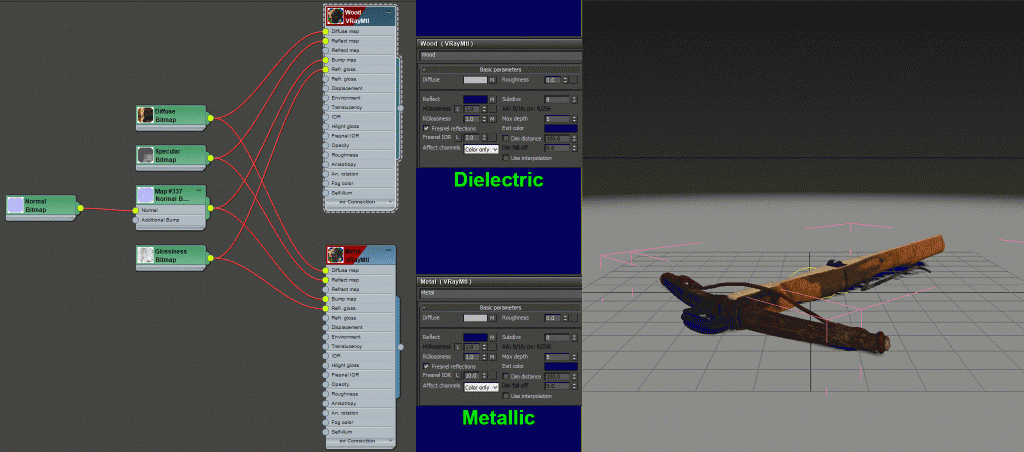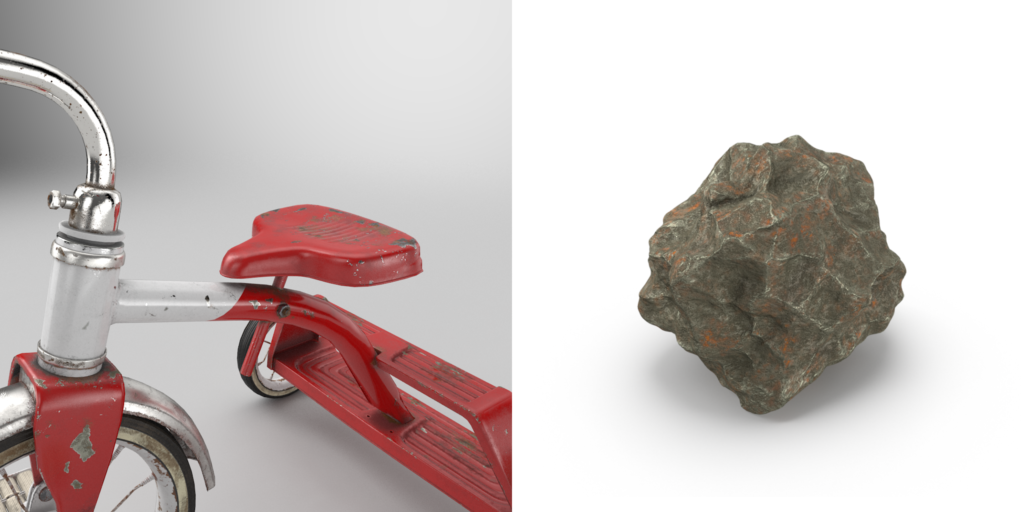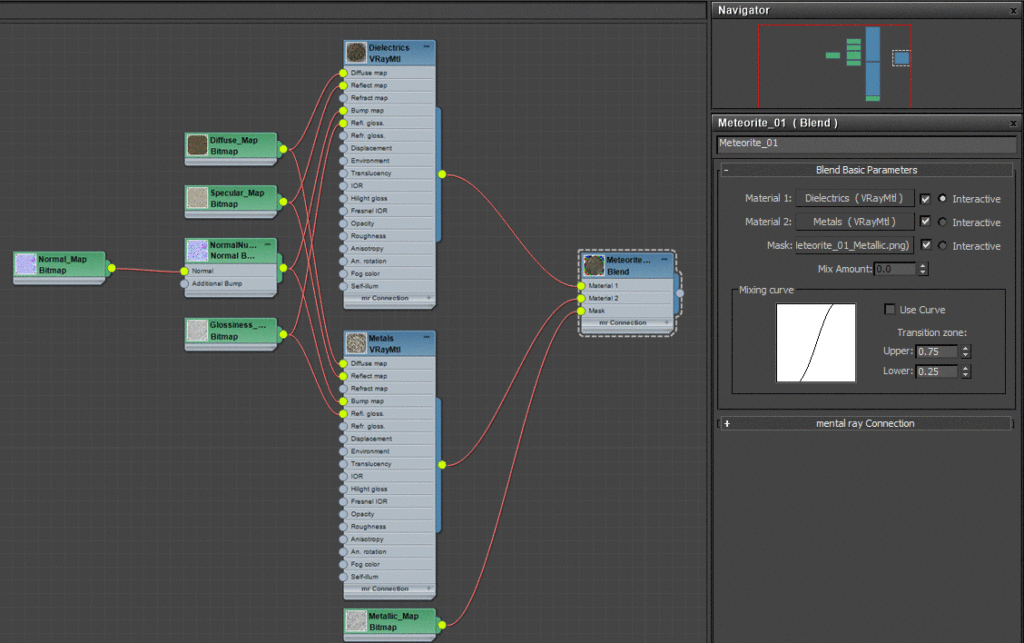A single texture map set may contain dielectric, metallic, and glass materials. Due to limitations of some renderers not being able to use IOR maps, individual IOR values must be used instead. This means that a copy of a single material may need to be made for each material type for that texture set. A single dielectric material applied to the dielectric objects and a single metallic material applied to the metal objects. Glass must always be separate materials and objects.

Objects that can be separated by material type should not use a blend material. They can share the same texture maps, but should each have
its own separate material with a high IOR value for metallics and a low IOR value for dielectrics.
There may occasionally be a single object that has both dielectric and metallic materials on the same surface that can not be separated. Materials like chipped paint showing metal or rock with iron deposits on the same surface.

Paint has a much lower IOR value then chrome. Since the paint and the metal materials cannot be broken up into separate objects, a blend material will need
to be used. The same applies to the rock. The stone material would get a low IOR value, and the iron deposits would get a high IOR value.
When an individual dielectric or metallic material can not be separated by object, that is the only time a blend material needs to be used. The Blend material is used to combine the 2 different IORs for dielectrics and metals. This way one material applied to the single object represents both surface types. A dielectric version of the material is created as Material 1 using correct low IOR value. A copy of that material is made for the metallic version as Material 2 with correct high IOR. The Metallic map is used as the Mask.





